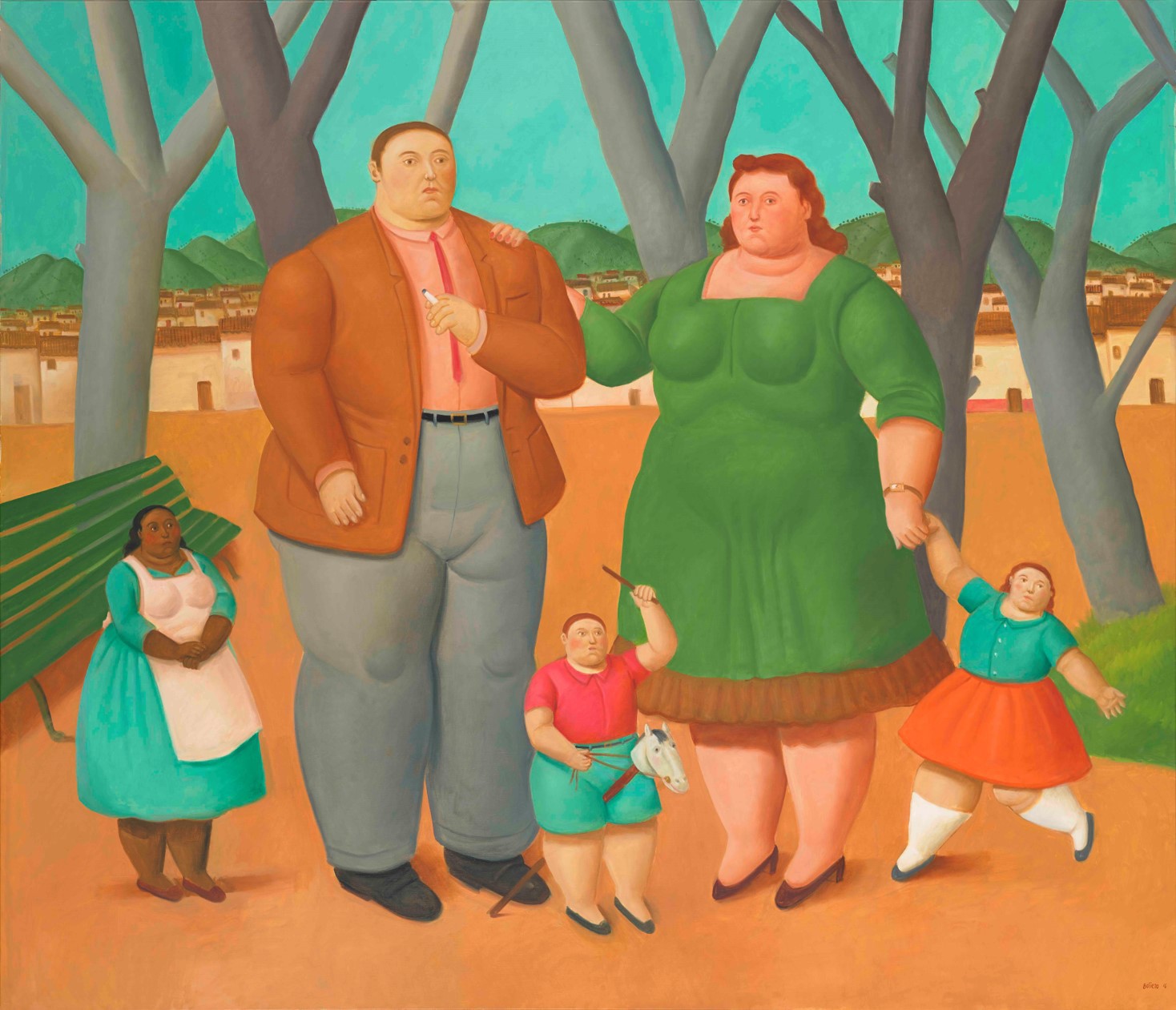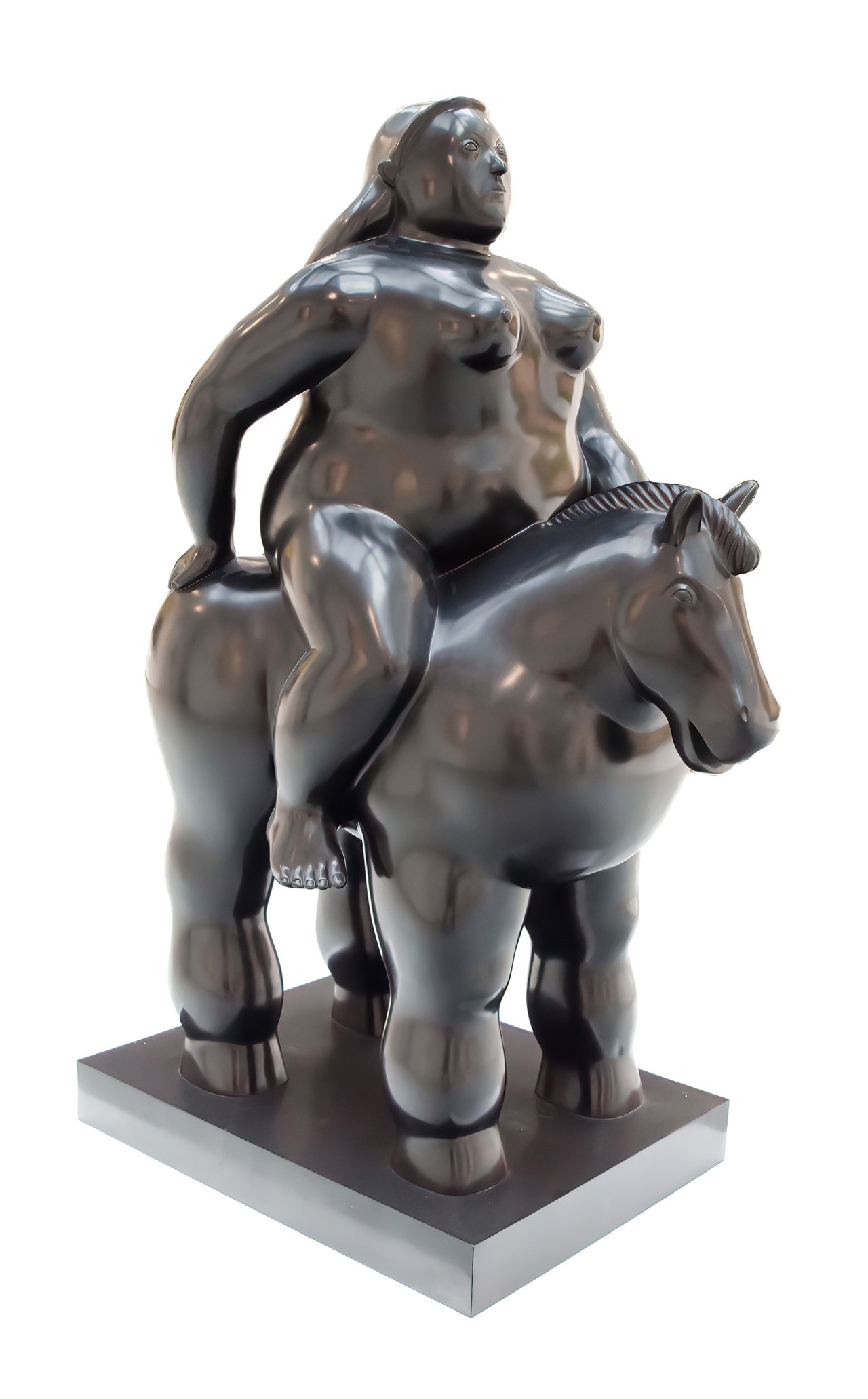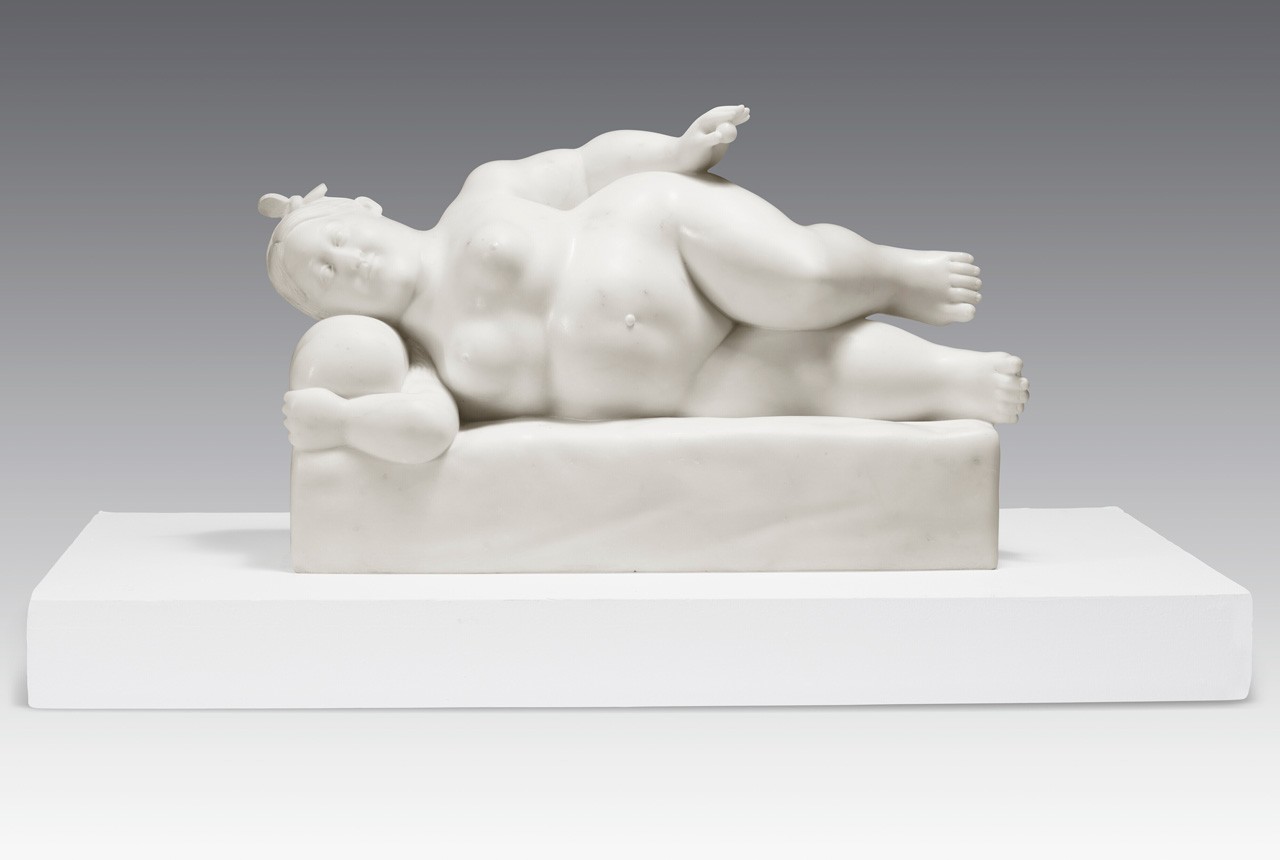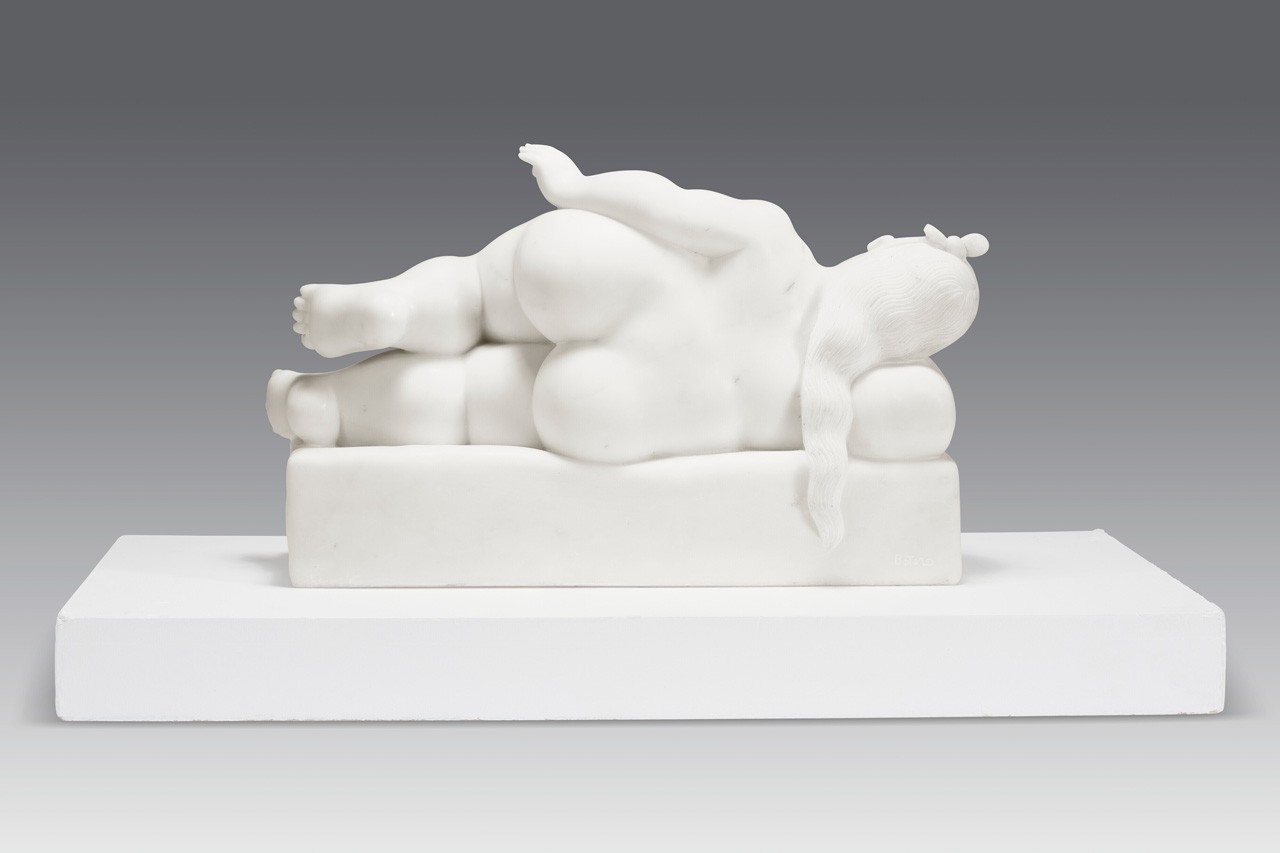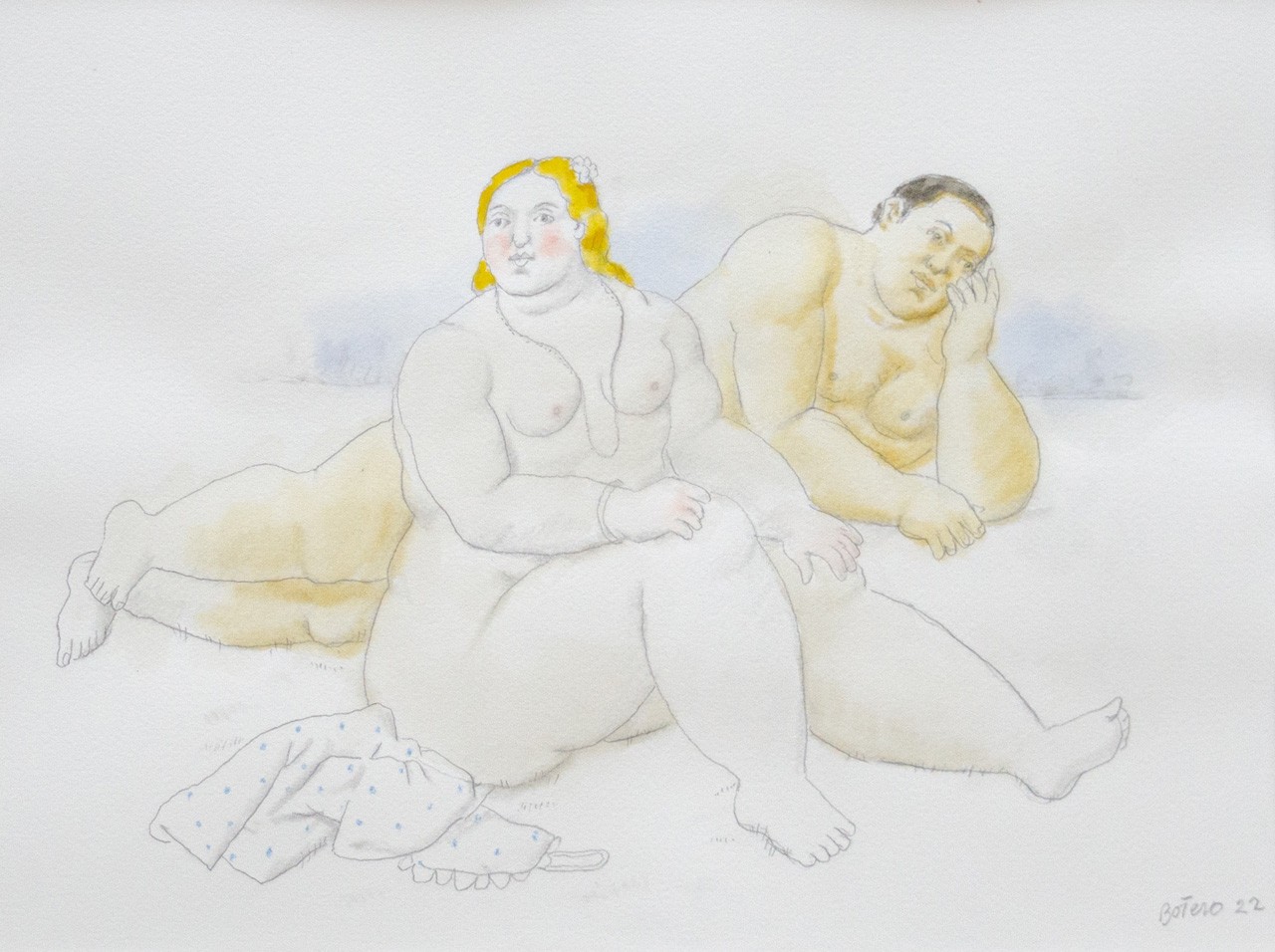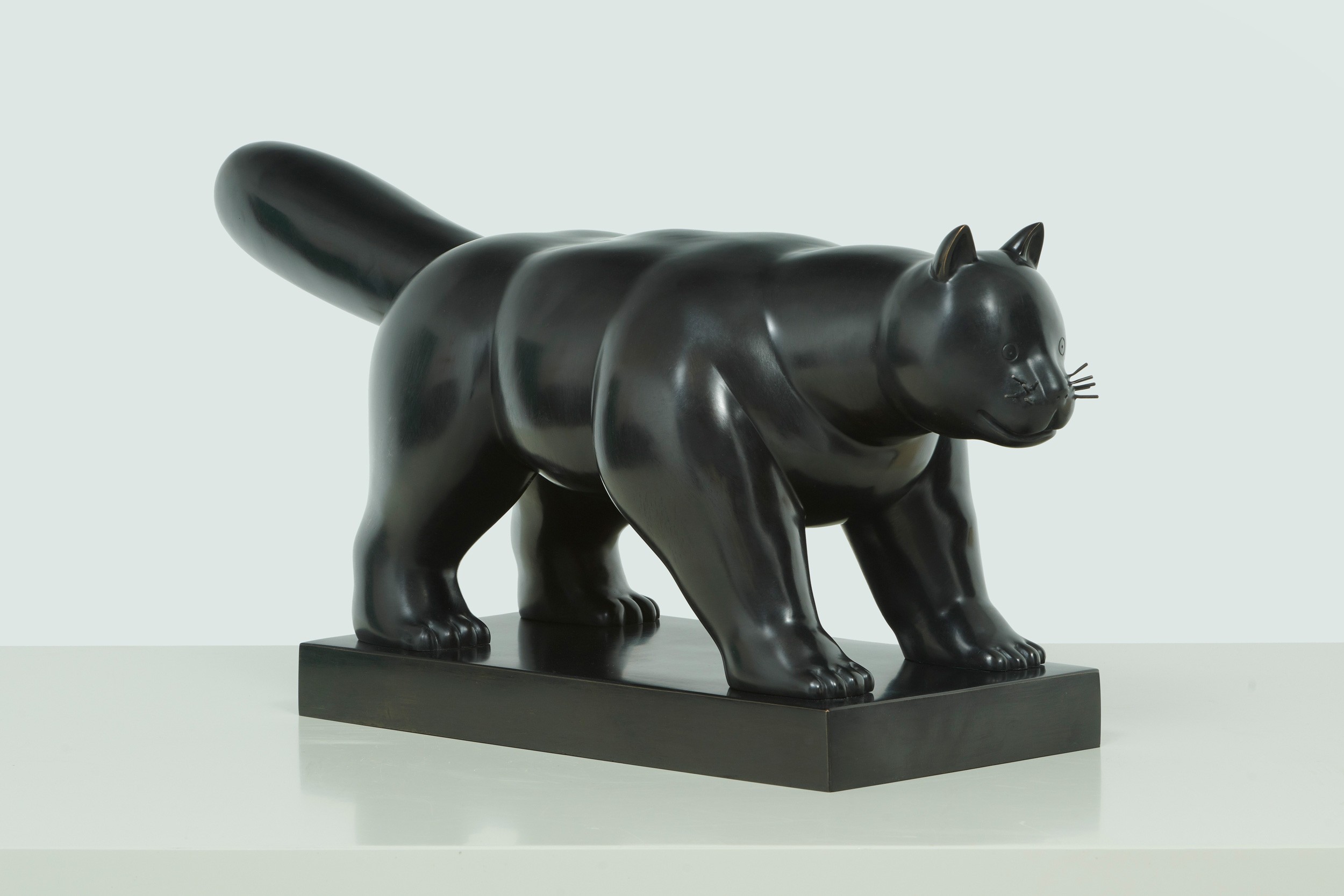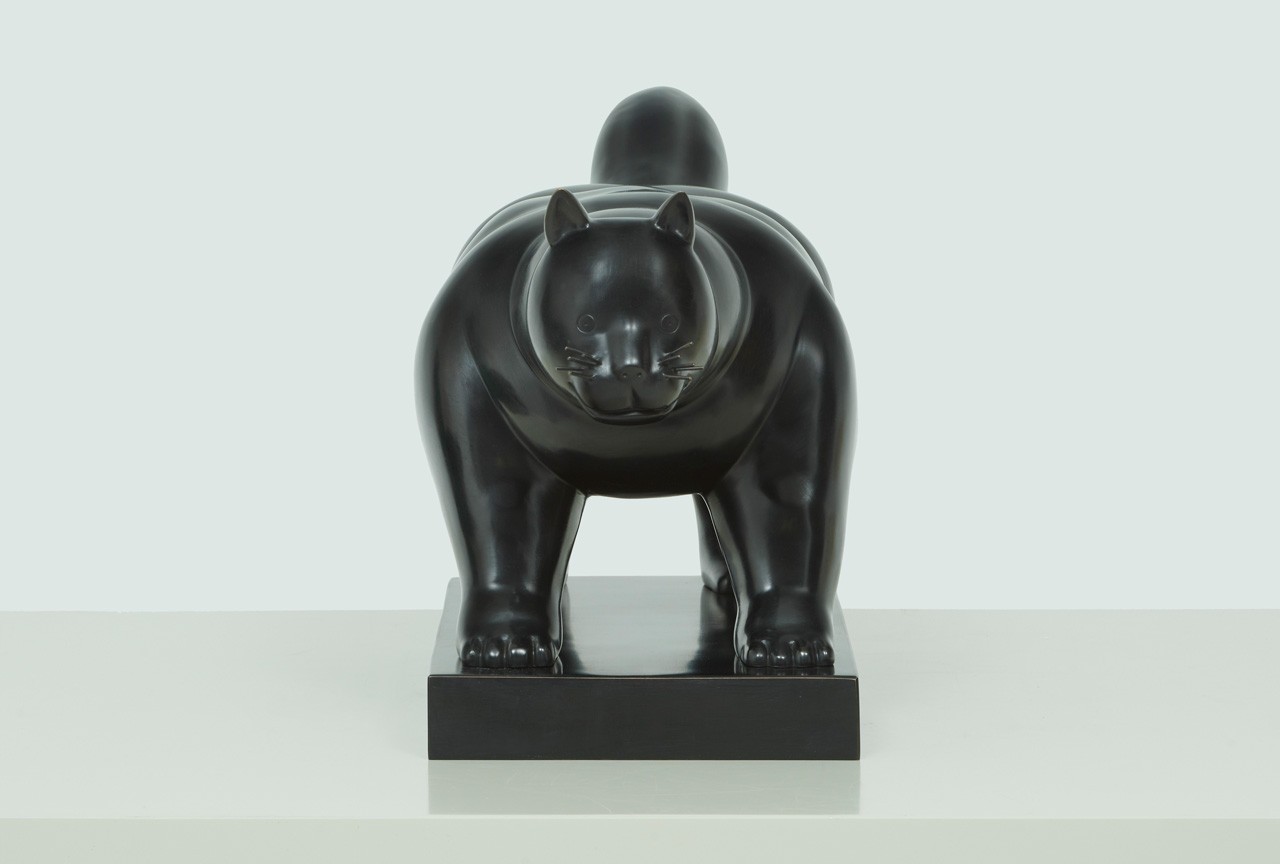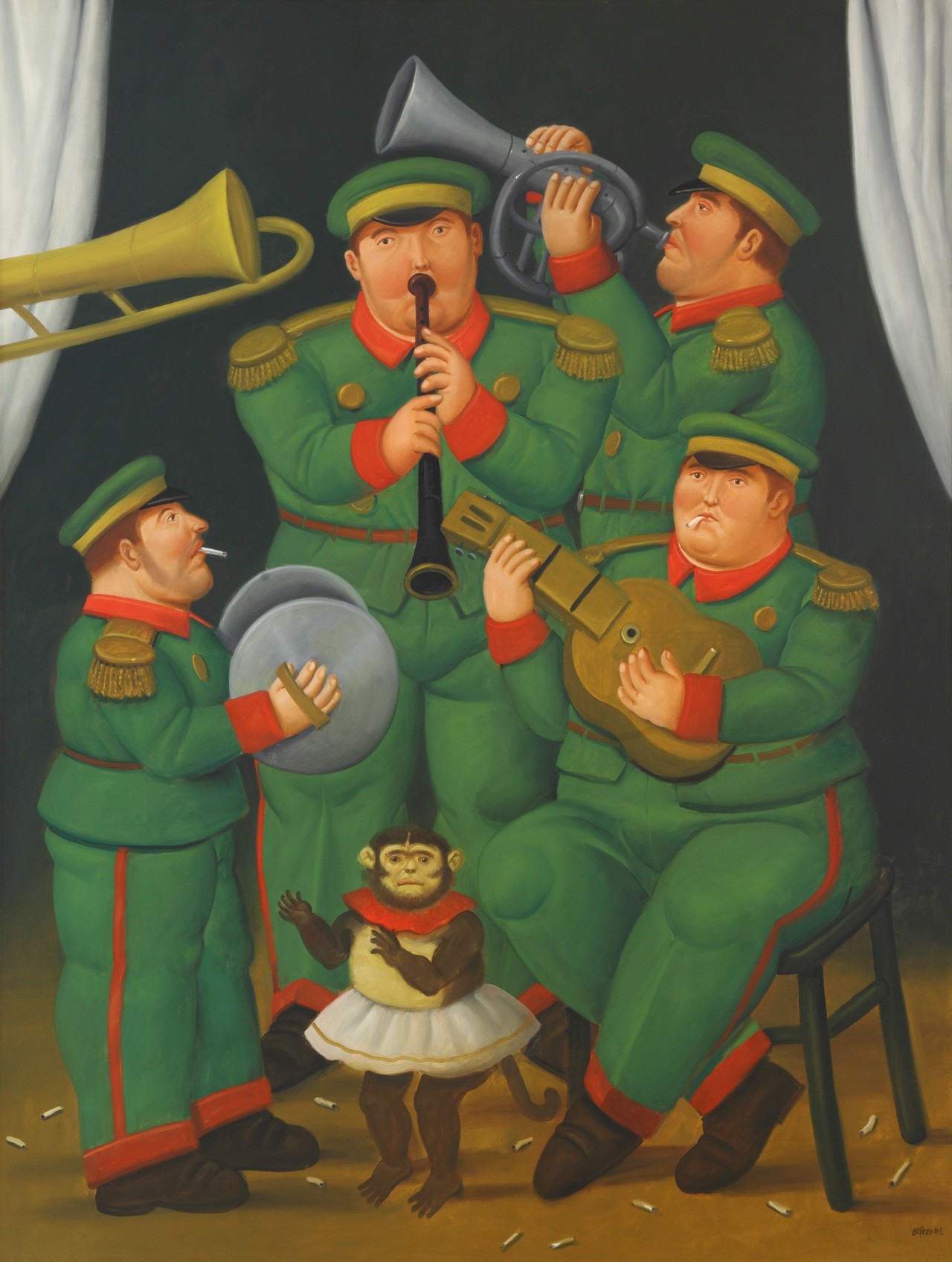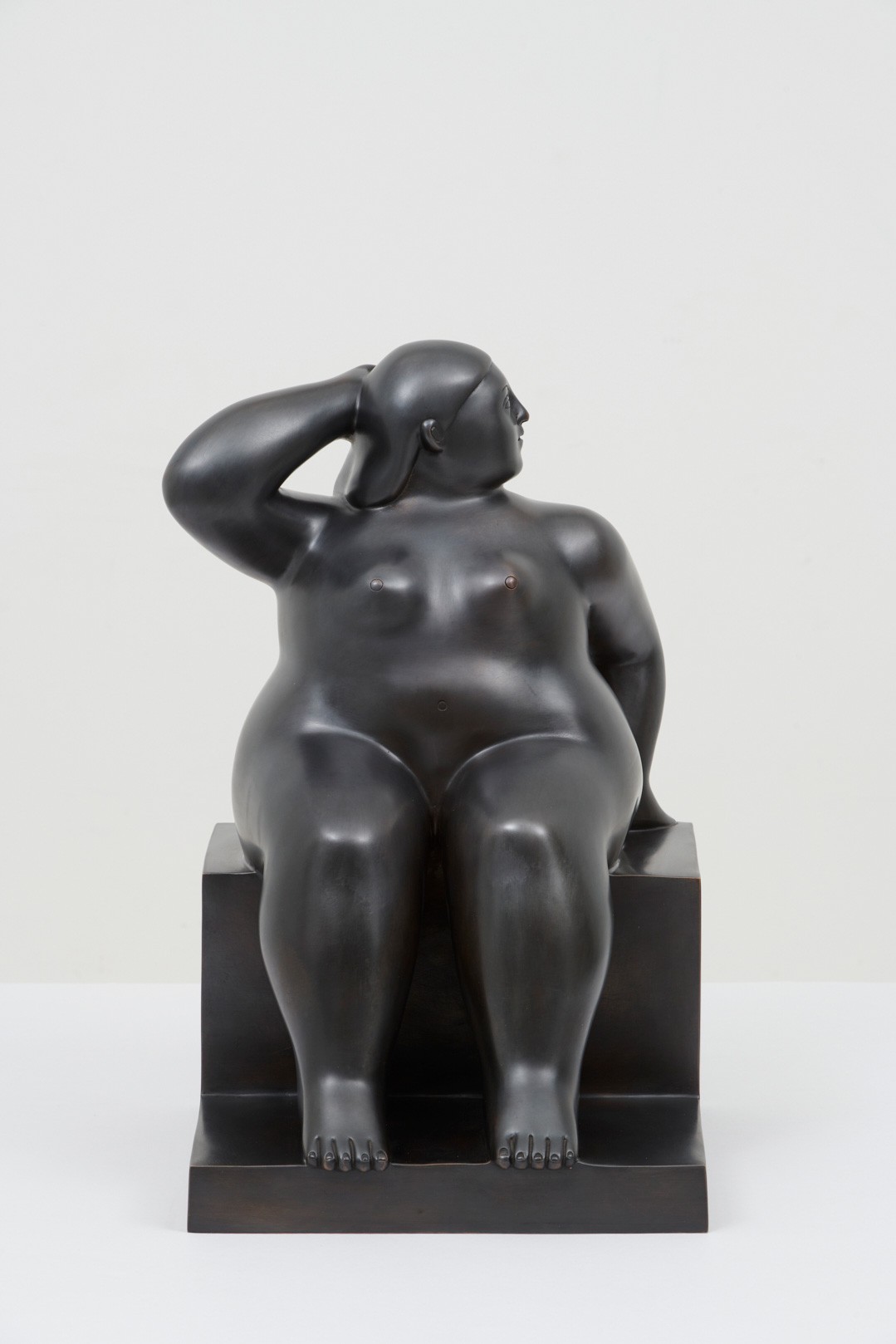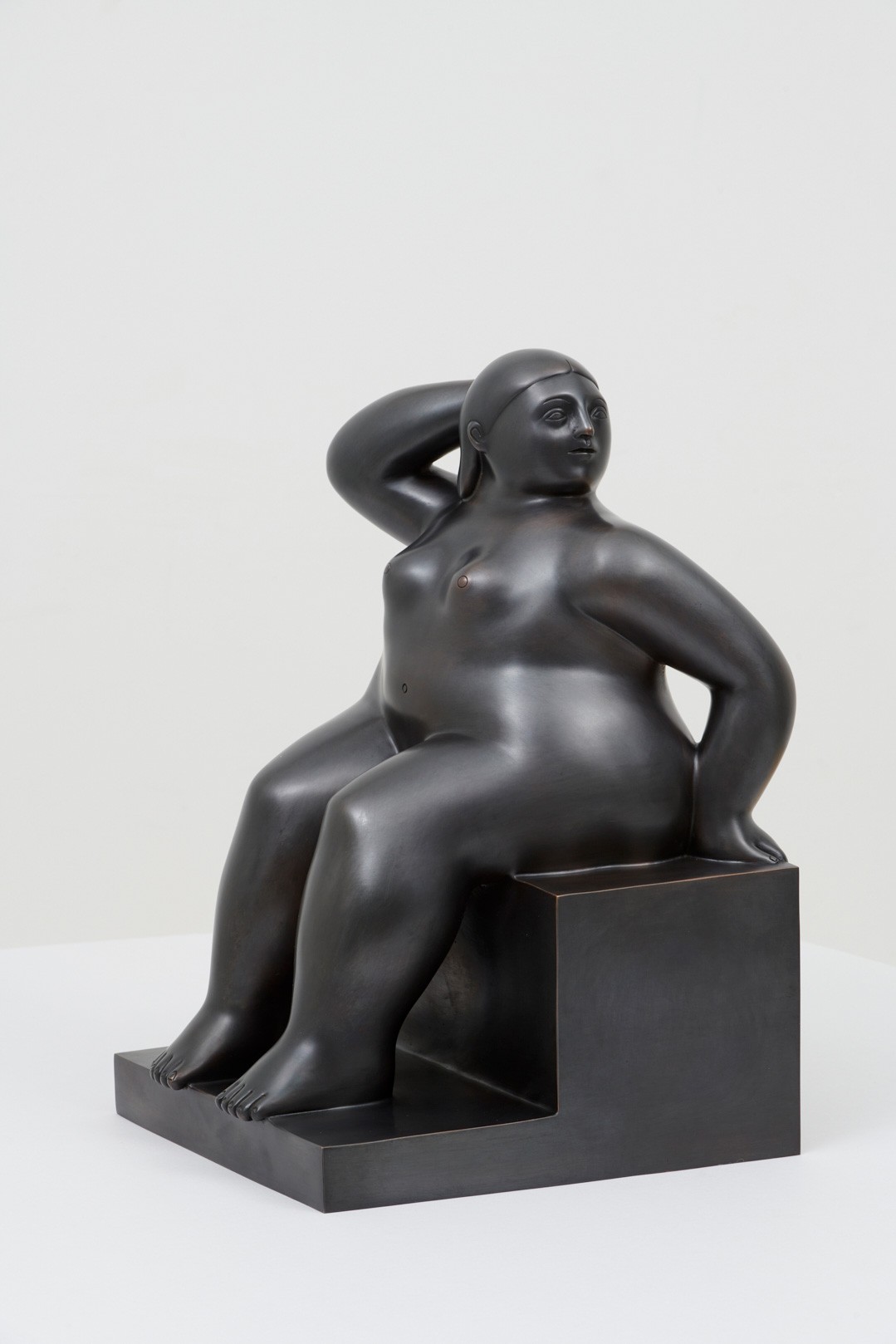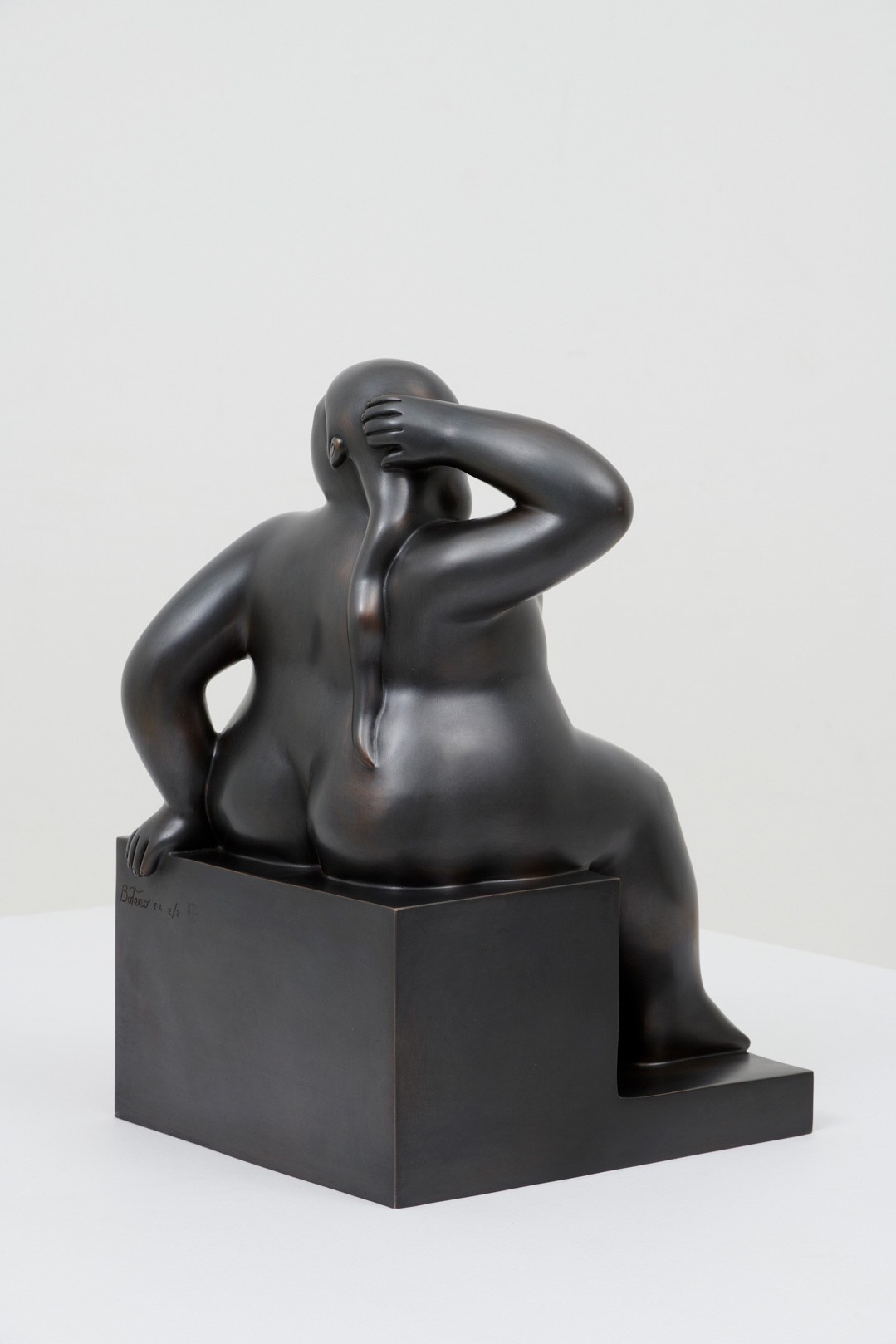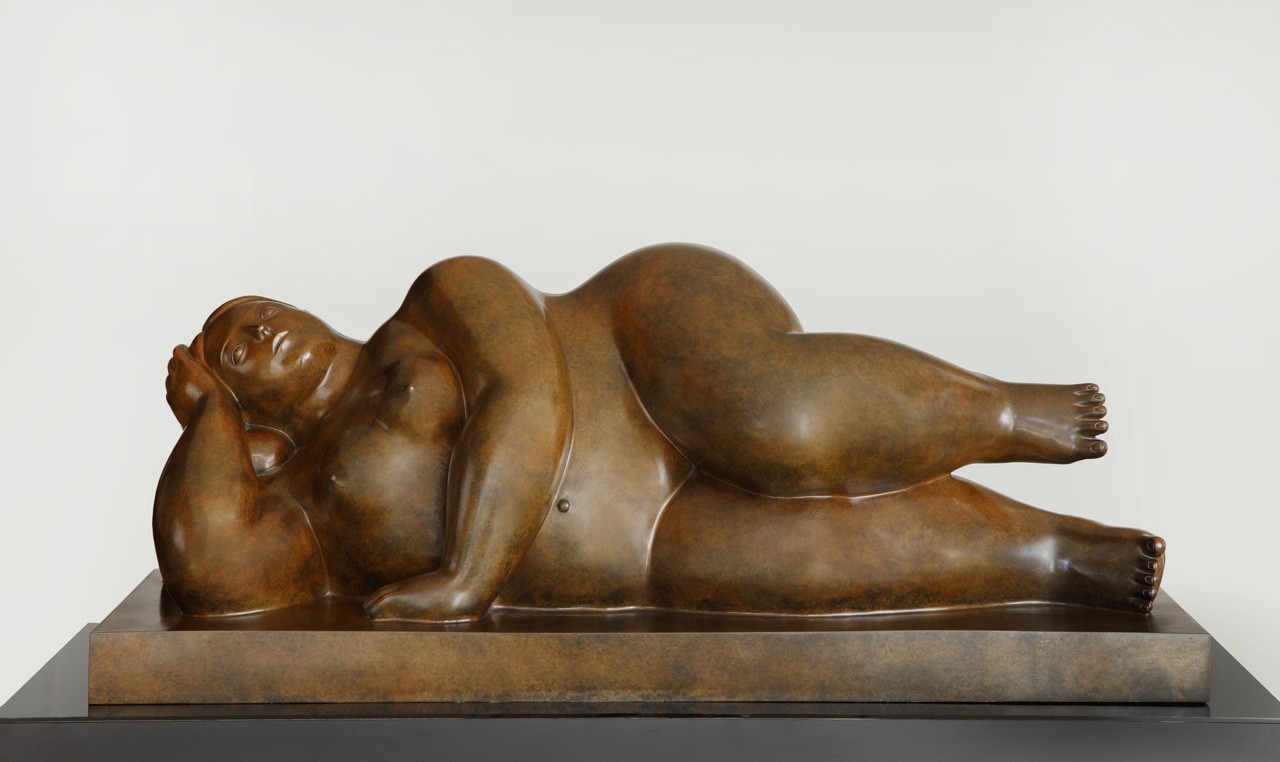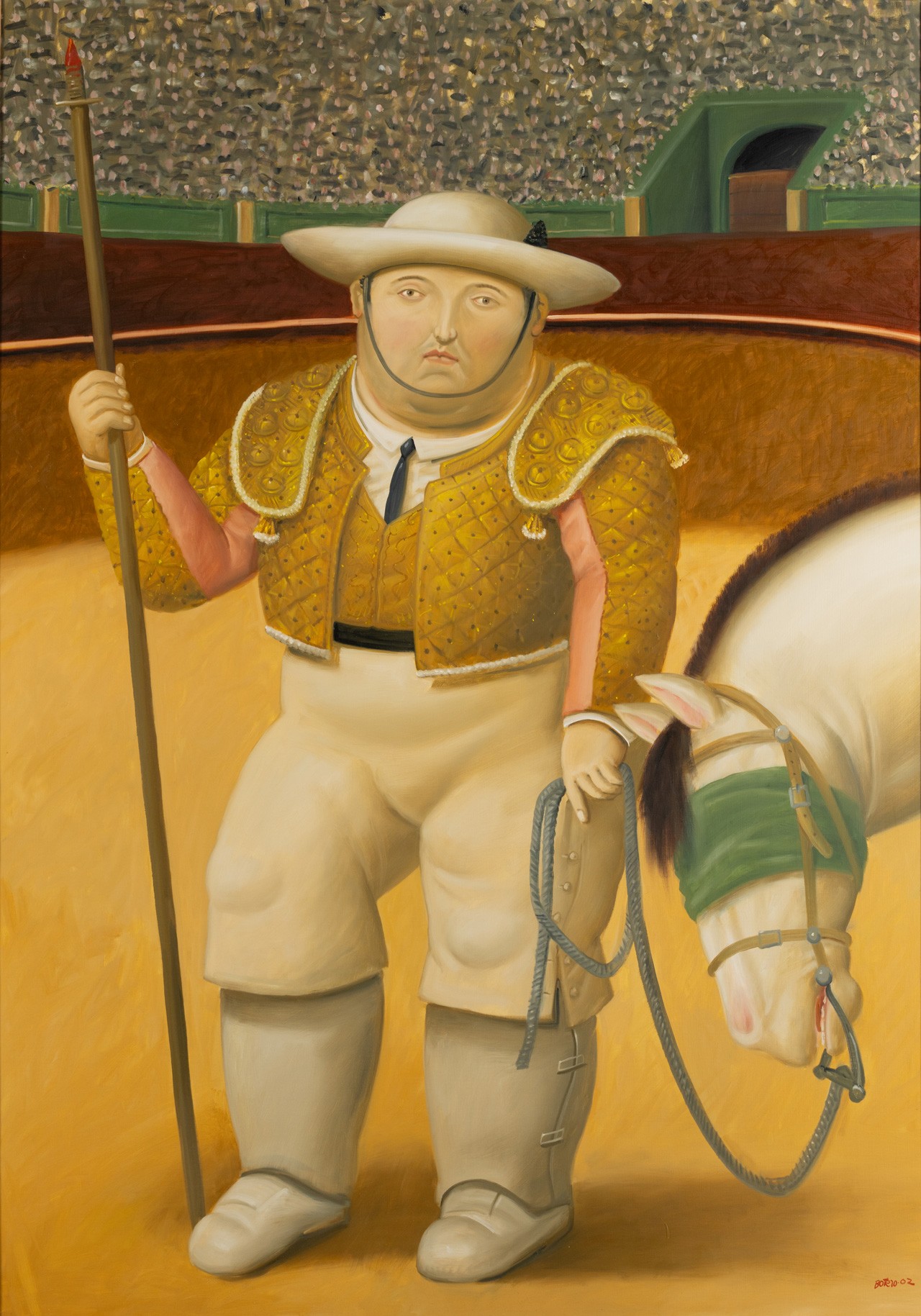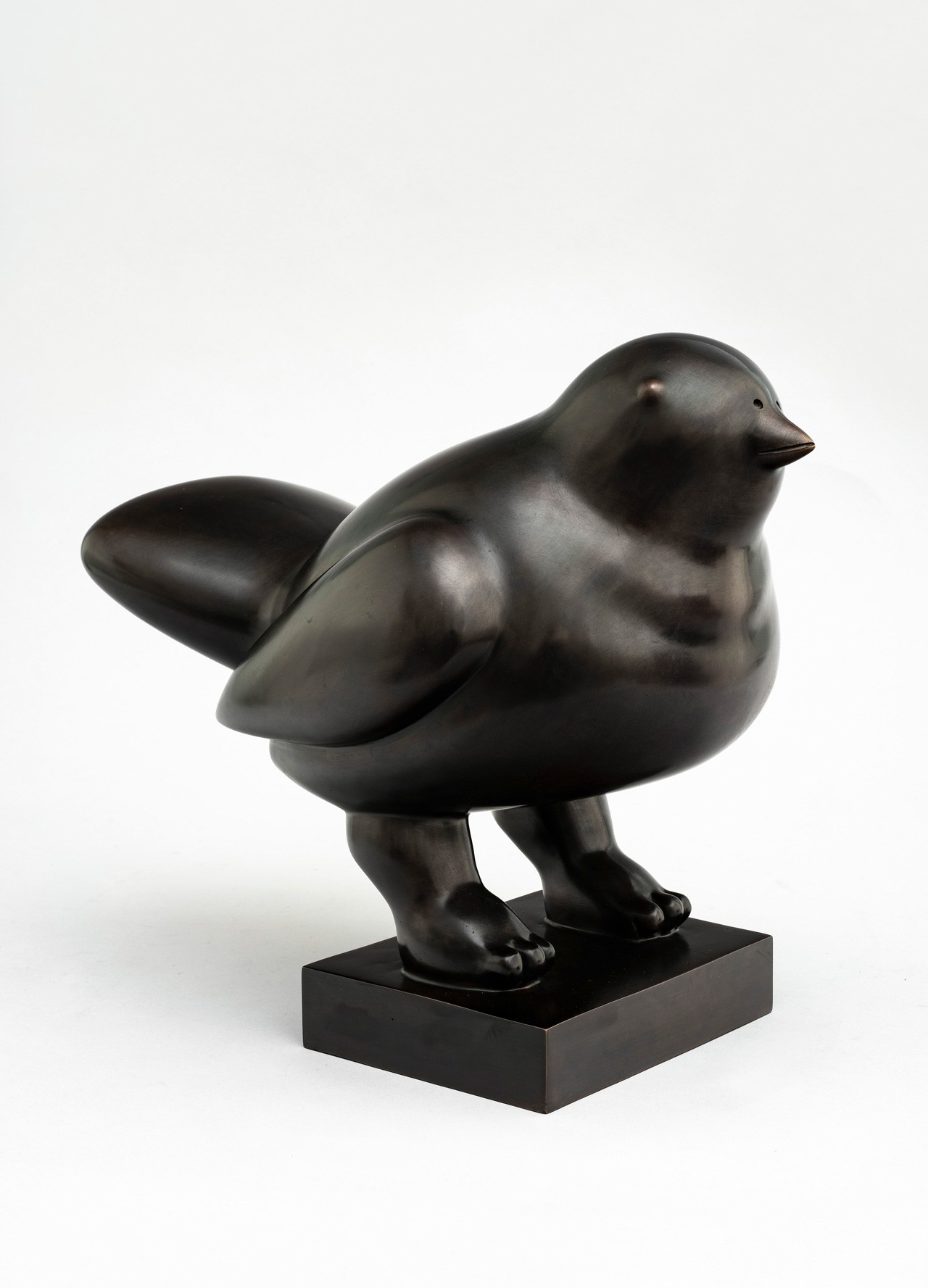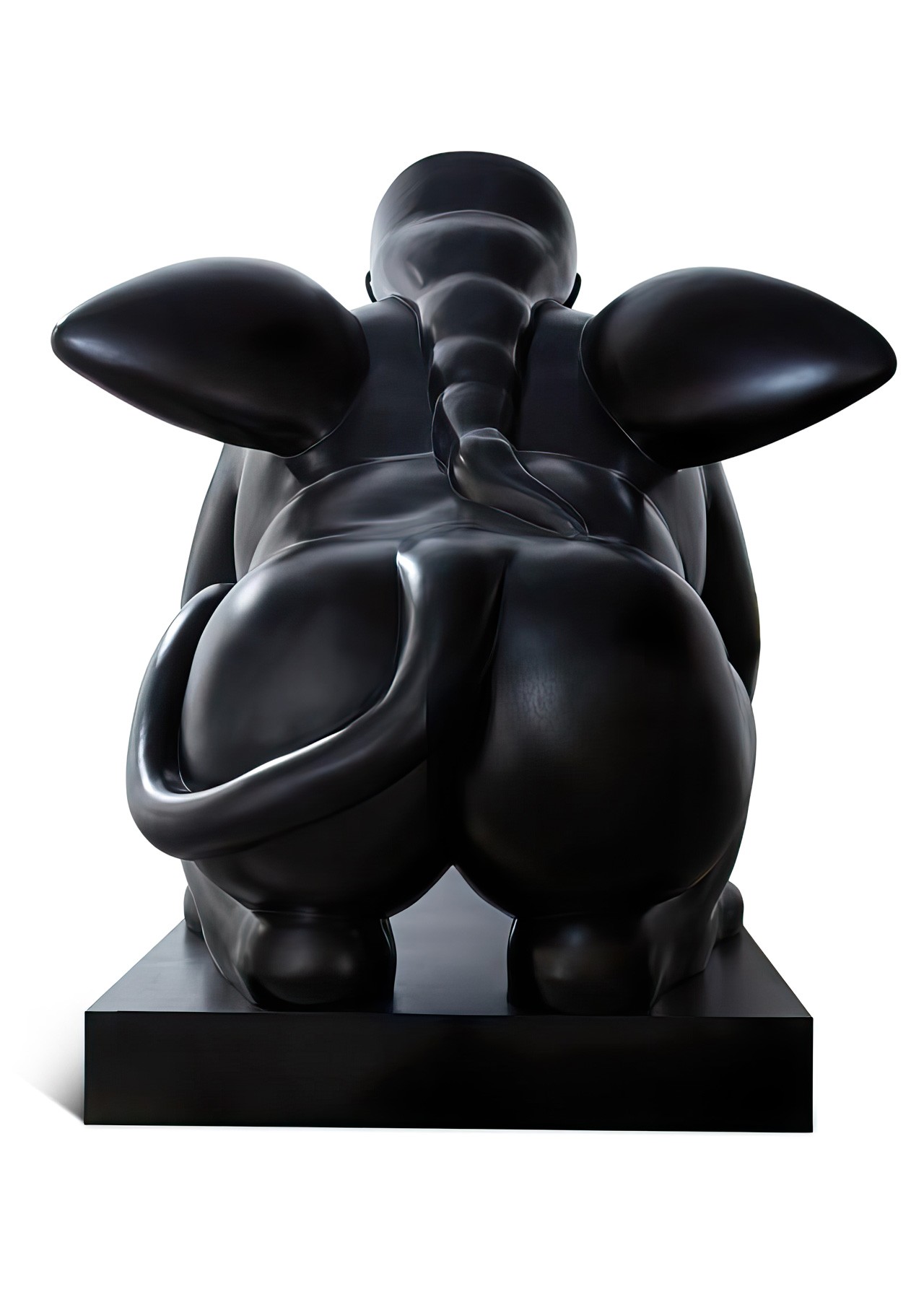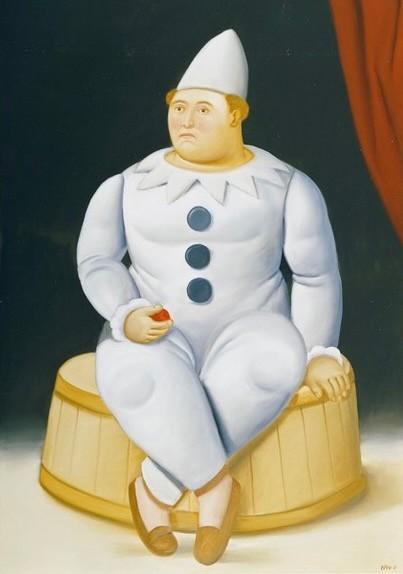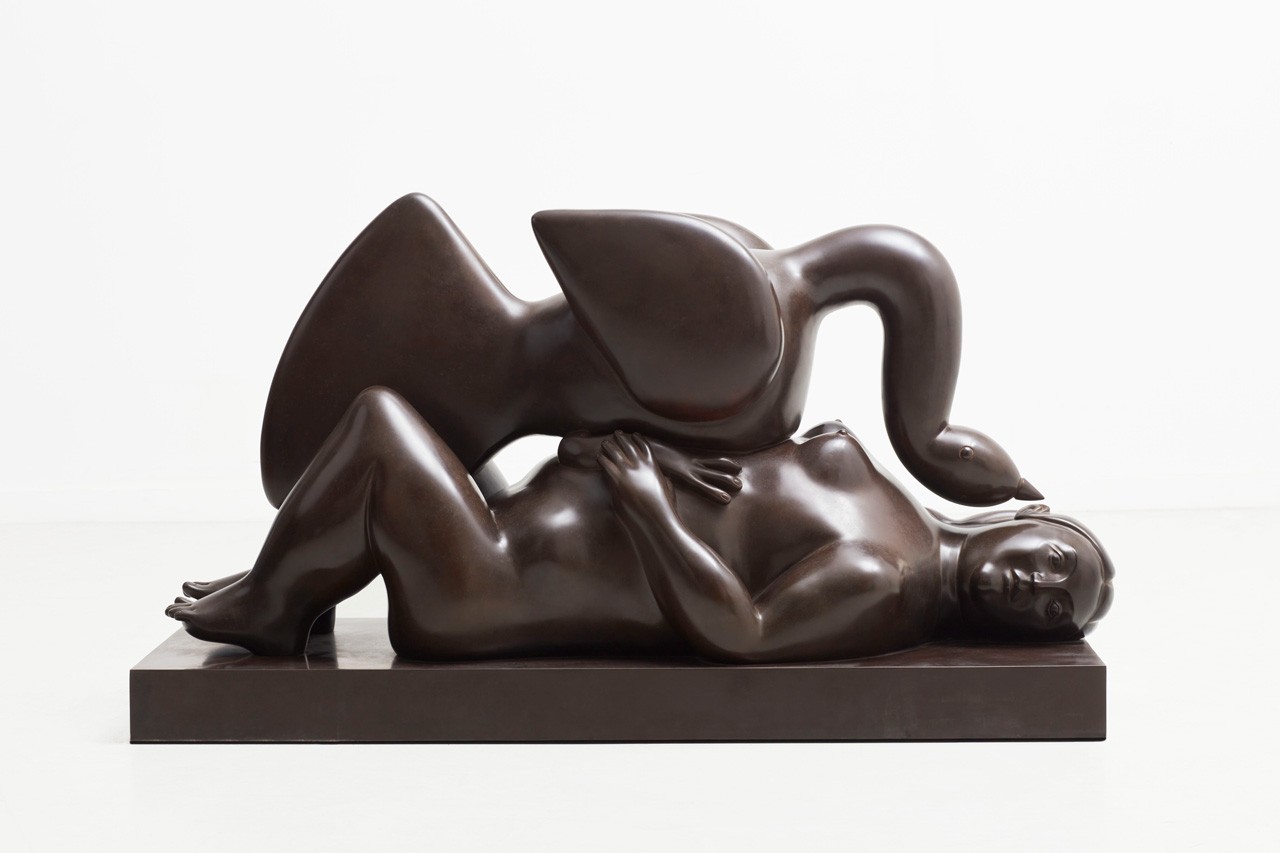Opera Gallery Miami is thrilled to present its solo show on renowned artist Fernando Botero: A Love Letter to Latin America, in conjunction with Miami Art week. With this exhibition, we celebrate the ubiquity of Botero's oeuvre and explore the intrinsic role Latin America has in the artist's life and work.
Born in 1932 in Medellín, Colombia, Fernando Botero has demonstrated his mastery of form and content for decades through his signature “Boterismo” style. His situational portraiture rendered with exaggerated volume seamlessly ranges in tone from richly sensual to starkly political. With depictions of matadors, ballerinas, priests, middle-class families and more, Botero's evocative paintings, drawings and sculptures tell a nuanced story about the cast of characters, both real and imagined, who parade through the artist's social critique interpretation of society. With his singular artistic vision, Botero invites us to revel in life's pleasure and pain while questioning society and effectively redefining fixed beliefs about the aesthetics of proportion and scale.
Because art is always an exaggeration; the painter exaggerates the color or the shape or exaggerates the line. There is always an exaggeration.”
Botero
En la plaza1987
Oil on canvas
182.9 x 130.5 cm
Botero
A Family2016
Oil on canvas
163.2 x 190.2 cm
“I paint what I see, what moves me. I don't try to create something that is purely aesthetically pleasing.”

Botero
Still Life with Fruit Bowl1999
Oil on canvas
98 x 135 cm

Botero
Still Life with Coffee Pot2002
Oil on canvas
38 x 33 cm
Botero
Paisaje2004
Oil on canvas
76 x 62 cm
Botero
Woman on Horse2015
Bronze
128 x 81 x 46 cm
“For my entire life, I've felt as if I had something to say in terms of sculpture. It's a very strong desire...Pleasure—that of touching the new reality that you create. Certainly, in a painting, you give the illusion of truth, but with sculpture, you can touch its reality. . . If I paint a knife in my pictures, it's imaginary, but if I sculpt it, then the sensation of having it in your hand is real— it's an object from your spirit, it's a sensual experience even in its execution. It brings a special joy to touch the material with your hands.”
Botero
The Saint2014
Oil on canvas
186.7 x 100.3 cm
“All my life, my girlfriends are always skinny. Beauty in art has nothing to do with beauty in reality. Why do you like primitive art? Because there is beauty in the deformity. Sometimes paintings that people consider realistic are not at all. Raphael figures look realistic, but in real life, they were deformed.”
Botero
Reclining Woman with Apple1990
White Carrara Marble
34.9 x 59.1 x 24.8 cm
Botero
Lady in Profile1983
Oil on canvas
88.9 x 70.2 cm
Botero
Woman with Flowers2023
Watercolor on paper
41 x 31 cm
Botero
Man and Woman2022
Watercolor on paper
30.9 x 40.64 cm
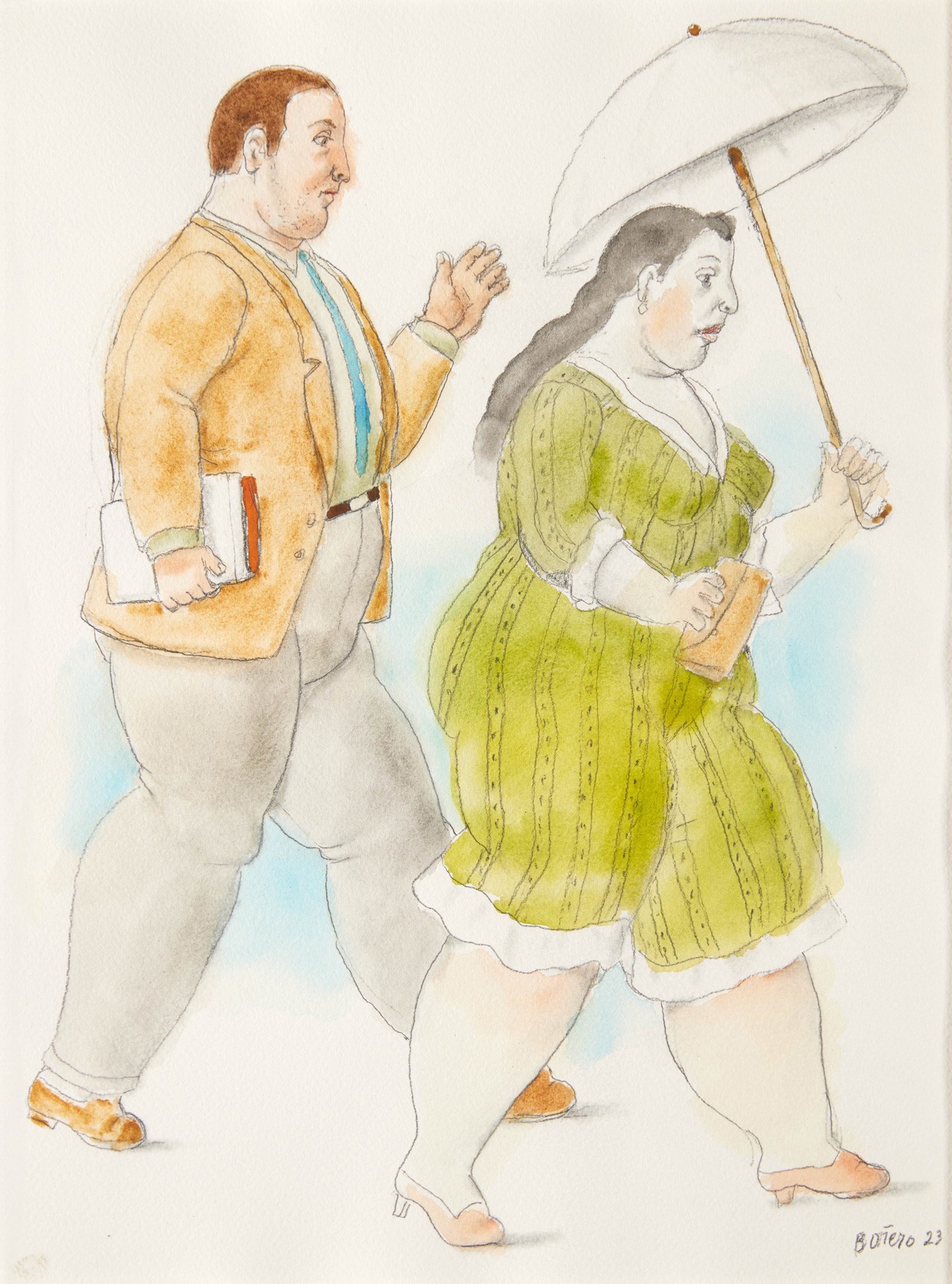
Botero
Man and Woman with Umbrella
2023
Watercolor on paper
41 x 31 cm
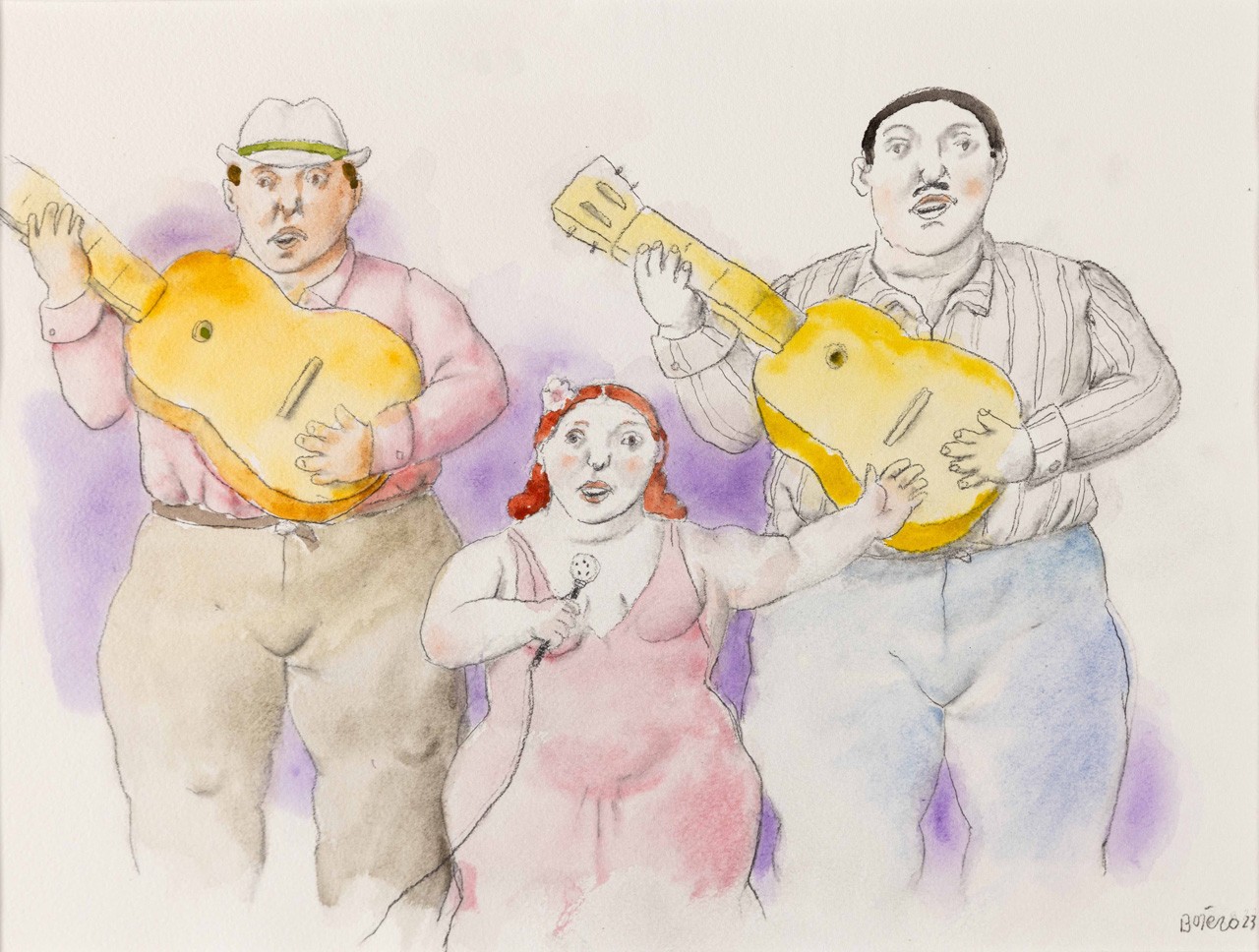
Botero
The Singer2023
Watercolor on paper
41 x 31 cm
“Sketching is almost everything. It is the painter's identity, his style, his conviction, and then color is just a gift to the drawing.”
Botero
Gatto Piccolo (con coda lungha)2023
Bronze
25 x 71 x 34 cm
“Art is the language that transcends borders and speaks to the souls of people from all walks of life.”
Botero
Circus Band2008
Oil on canvas
184 x 141 cm
Botero
Two Guitarists2018
Oil on canvas
125 x 95 cm
Botero
Portrait of Picasso1998
Oil on canvas
187 x 128 cm
Botero
Donna seduta su cubo2006
Bronze
43 x 27 x 32 cm
“An artist is attracted to certain kinds of form without knowing why. You adopt a position intuitively; only later do you attempt to rationalize or even justify it.”
“Sculptures permit me to create real volume one can touch the forms, one can give them smoothness, the sensuality that one wants.”
Botero
Couple2002
Bronze
65 x 50 x 18 cm

Botero
Reclining Woman2007
Bronze
114.3 x 47 x 47 cm
“I create my subjects somehow visualizing them in my style. I start as a poet, put the colors and composition down on canvas as a painter, but finish my work as a sculptor taking delight in caressing the forms.”
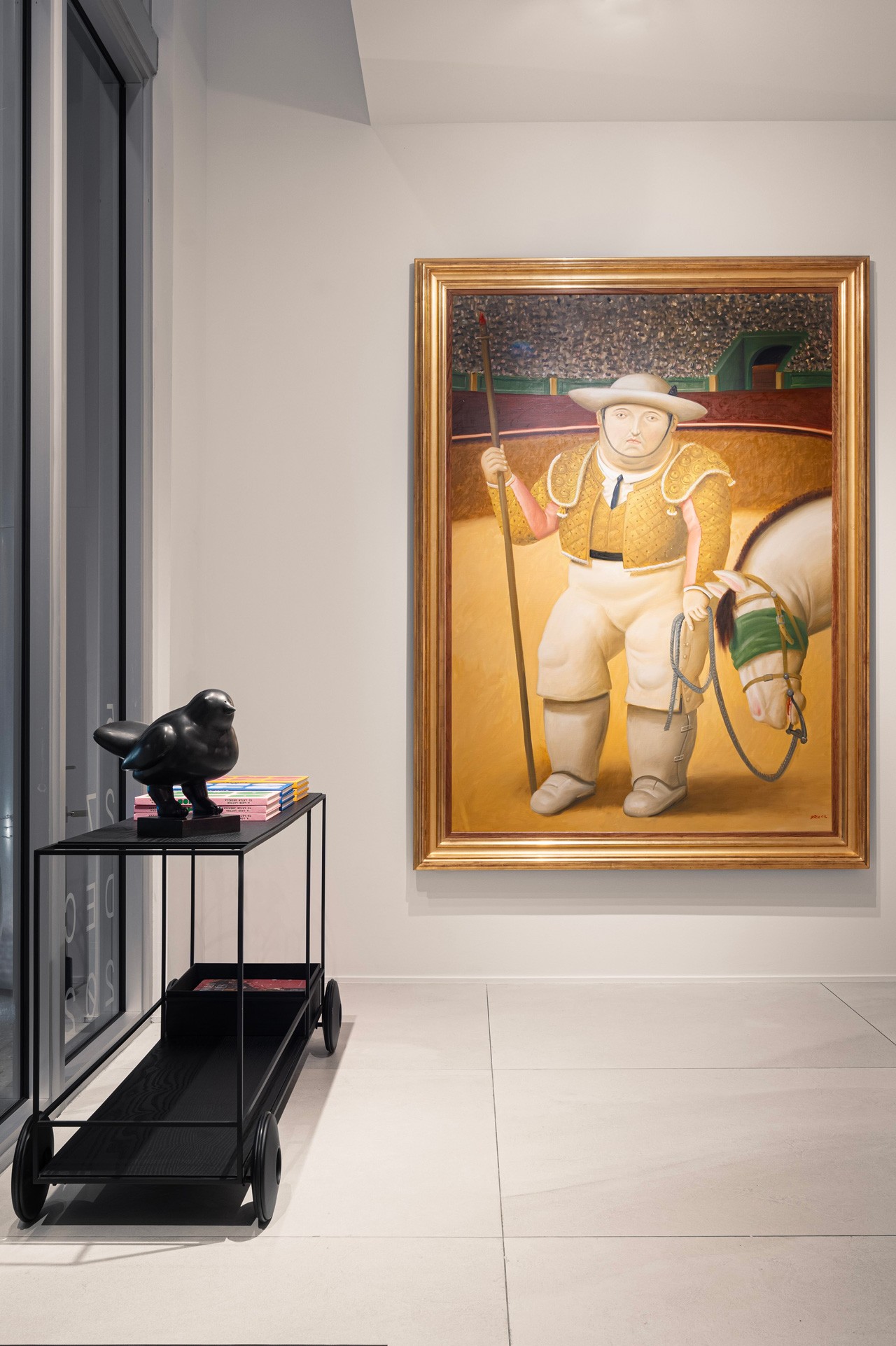
Botero
Picador2002
Oil on canvas
193 x 136 cm
Botero
Uccello2006
Bronze
36 x 36 x 24 cm

Botero
Circus People2008
Oil on canvas
132 x 109 cm
Botero
Clown In White2008
Oil on canvas
143 x 100 cm
“The circus allows one to be logical and unreal at the same time. In the circus, all is possible: there can be a man with two heads or a character with a green face.”
Botero
Leda and the Swan2006
Bronze
71 x 127 x 52 cm
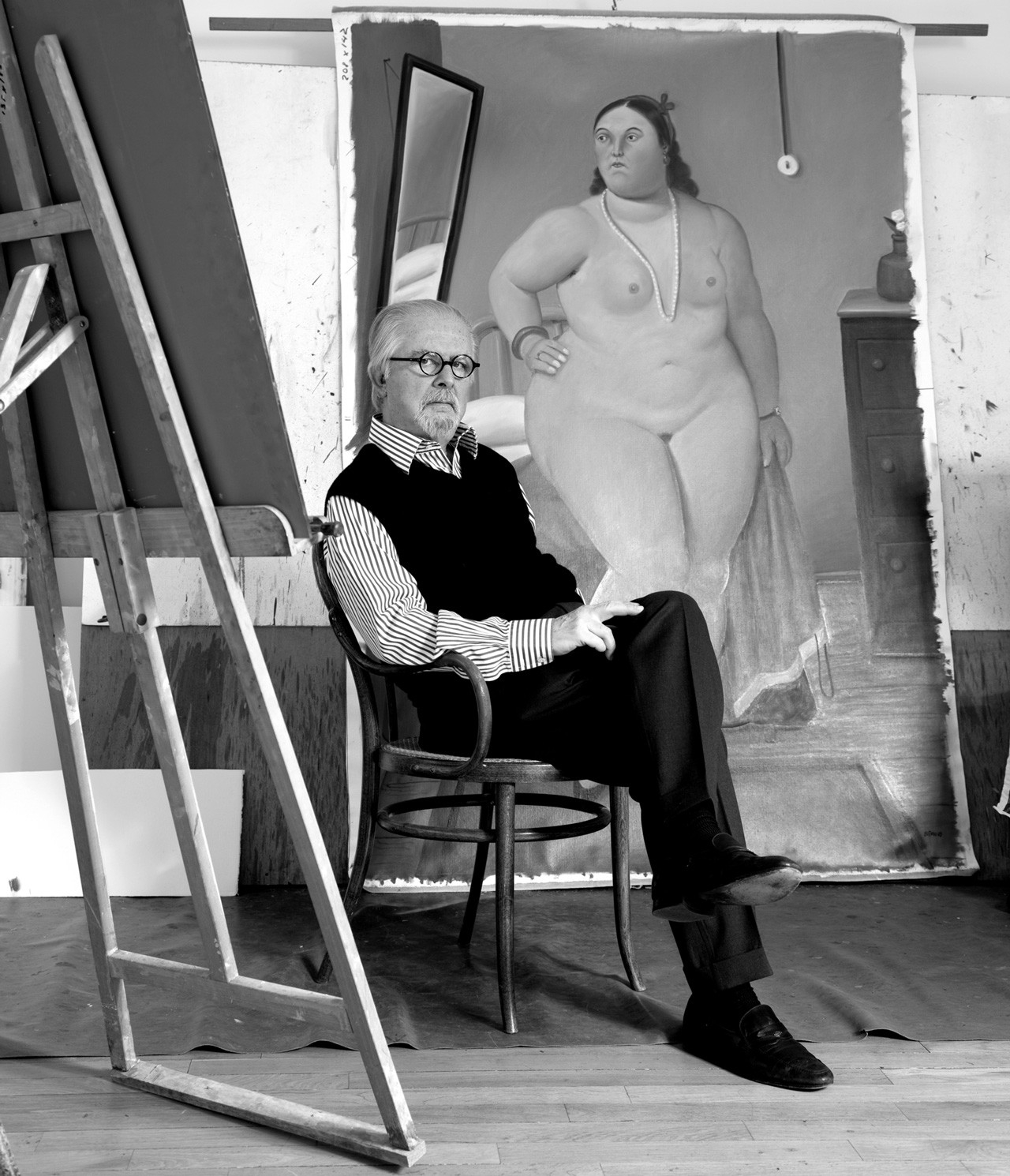
Image copyright Enrique Palacio
One of the most celebrated contemporary Latin American artists, Fernando Botero was born in Medellin in 1932. After a stint at a matador school, Botero decided art was his true calling and in 1948, aged 16, he had his first exhibition. In the early 1950s Botero travelled through Europe, studying art at Madrid's Real Academia de Bellas Artes de San Fernando, followed by a spell in Paris spent absorbing the works of the Old Masters at the Louvre. He continued to Florence, where he studied the frescoes of the Italian Renaissance, discovering techniques from a bygone era. From 1961 to 1973, he resided and worked in New York city before dividing his time between Paris, Monaco, and Tuscany. He passed away in Monaco on September 15, 2023, at the age of 91.
Botero gained widespread recognition for his unique artistic approach characterized by the use of smooth, inflated forms and surprising variations in proportions. This distinctive style was a manifestation of the artist's relentless pursuit of imbuing volume with a tangible and authentic presence. His body of work encompasses a wide array of subjects, ranging from everyday life in Colombia to iconic art historical references like the Mona Lisa, and the injustices stemming from the abuse of authority.
Botero created monumental sculptures for public spaces in many major cities, including New York (Park Avenue), Paris (Champs-Élysées), Rome and Monte Carlo. His works are found in many important private and public collections, such as the Hirshhorn Museum and Sculpture Garden, Smithsonian Institution (Washington, D.C.); Ho-am Museum (Seoul); Israel Museum (Jerusalem); Kunsthalle Nuremberg (Nuremberg); Museo d'Arte Moderna del Vaticano (Rome); Museum Moderne Kunst (Vienna); Neue Pinakothek (Munich); Staatgalerie Moderne Kunst (Munich); Tel Aviv Museum of Art (Tel Aviv); The Metropolitan Museum of Art (New York); The Museum of Modern Art (New York); and The Solomon R. Guggenheim Museum (New York).


